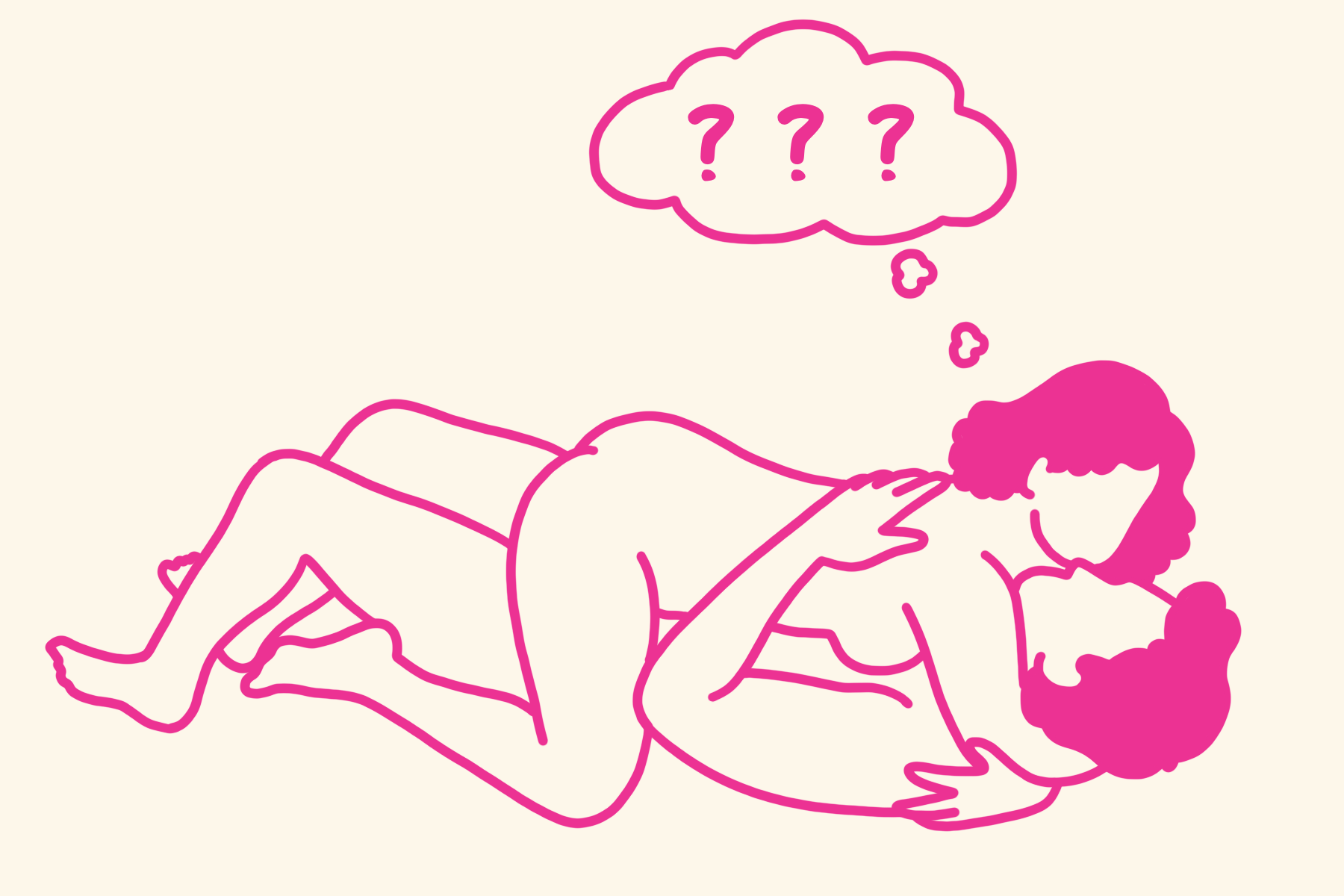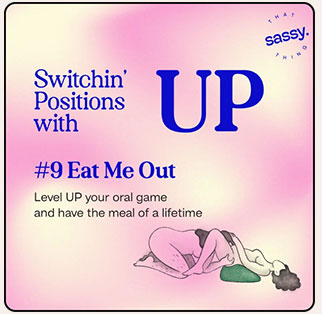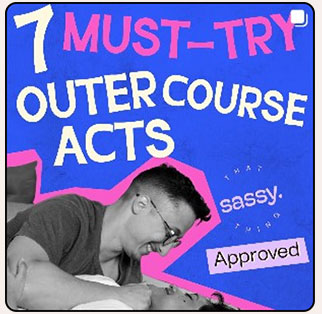Your cart is currently empty

Ever been called a “good girl” and felt icky about it? Or found yourself wondering what it would be like, if you didn’t have to always be the penetrating partner? A lot of the ways most of us approach intimacy is based on gender roles.
The scripts on pleasure that we are fed are dictated by the binary and it is a huge leap to introspect about how we might enjoy touch, irrespective of our genders assigned at birth. This is also what brings the person and the political together and makes this unlearning so revolutionary.
Aunt Sassy’s always been one to break norms, and knows that oftentimes the gateway to owning your pleasure, comes down to exploring yourself (and she’s got a whole collection of self-care products to help you find your way).

In this guide, we’re going to be talking about gender dysphoria and how we can mould our playtimes to be spaces that allow us to process it and affirm our identities. We’ve also gotten in touch with some sassy experts with lived experience and professional know-how, so you pay extra attention!
Breaking down gender dysphoria
Trigger warning: suicide
Gender dysphoria refers to emotional and physical distress that is experienced by an individual when they encounter incongruence between the gender that they identify with and the gender that they have been assigned.
Because of the strict gender roles that society prescribes for all of us, many people may feel a disconnect between who they are and the gender that they are “supposed” to be.
However, this disconnect can cause significant distress in trans and non-binary people, such that it may affect their day-to-day functioning and put them in a state of marked discomfort, leading to depression, anxiety and even suicidality.

As Apurupa, who is 30, a sexuality educator and one of our masterclass facilitators explains, “my dysphoria isn’t the problem, the cis-centric transmisic way in which we’re taught or not taught to navigate intimacy and relationships is.” They also highlight how trans-affirmative pleasure education is almost unheard of, which further exacerbates the journeys of trans and non-binary people as we try to explore ourselves.

Another participant R, who is 24 and works as a research assistant in gender and legal policy making explains, “during any intimate experience, it feels like the roles and expectations have been predetermined. As a vulva owner, I am expected to go down on my partner who’s a cis man. My partner with a penis is expected to engage in penetration and I’m supposed to be at the receiving end of it. This is what I’ve been conditioned to believe all my life. As a femme non-binary person, I’ve always felt conflicted about my engagement in pleasure based on how a woman is supposed to, normatively. “
Rewriting the scripts for playtime
When trying to navigate gender dysphoria, Apurupa highlights, “it is important to remember that not all trans people might be dealing with gender dysphoria, and nor is dysphoria necessarily the most important indication of a person’s transness.” This makes it all the more important to pay attention and communicate about individual needs and preferences.

What might be dysphoric for one person might even be euphoric for someone else, the same way that what someone might not consider during intimate experiences, may be intensely satisfying for another. It can be helpful to reflect by yourself or with a boo, about how you want to play. Remember, pleasure can be a world of possibilities.
Joe, a 26 year old physicist and transman, shares how he is in an interesting position when it comes to navigating dysphoria. “I’m a transman, but I’m also kinky and like the dom-sub dynamics. And I’m verse–I like to top and bottom. So a lot of the gender roles are already subverted.”
Some other ways to make lovemaking less gender dysphoric can be:
- Using gender neutral or gender specific names for yourself, your partner, or your body parts, based on your preferences and desires.
Being an affirmative partner
-
Building an affirmative space: The dynamic nature of gender dysphoria and intimacy in general, underscores the need for communication between partners.
R shares, “I’d like my partner to ask me what I would like to do so I can feel more reassured in my gendered identity.” Anindita Kundu, a non-binary mental health professional, who is 32, explains, “Talking about pleasure can be an integral part of the process of creating an affirmative space with identity needs and boundaries. Even with a clear grasp of one’s identity, communicating about it can be a vulnerable undertaking. Specifying the choice of words, type of touch and for which body parts, can be key in developing safe intimate dialogues.”
Techniques like the traffic light or red light/yellow light/green light exercise, can be used to verbally communicate when you want to stop, when you want to pause, and when you want to go (*wink wink*). It might also be helpful to compare this exercise when riding solo and when with a partner, to notice how the categories for each might change and the possible influence of being with a partner and the often gendered expectations that come with it.
-
Get discovering: As part of rewriting the scripts for the bedroom, you and your partner could think about the kinds of pleasure that you’d like to engage in and the way that you would like it to feel, as opposed to going with what’s expected based on your anatomy or the way that you’ve been socialised.
Joe shares, “I’ve been so lucky to have the most gentlest and loving partners. One of my partners even looked up positions that transmen typically enjoy. So we got to try out a whole bunch of them that are intended to make me feel like I’m in a masculine position, which made me feel like they cared for me in the most delightful and thoughtful way.”
- Ensure safe pleasure practices: It is always vital to keep in mind the basics of checking for active and ongoing consent, using protection, an intimate lubricant, and providing aftercare. Apurupa adds, “In case you’re using substances to take the edge off, exercise in harm reduction practices like not mixing alcohol and other drugs, checking in periodically with each other, and stopping entirely if a person is slurring or losing consciousness."
Tapping into gender euphoria
Gender euphoria describes the comfort and joy that one feels when their gender expression aligns with their gender identity. In contrast to gender dysphoria, which is a term that originates in psychiatry, gender euphoria is one that emerged from the trans community to add perspective to ways that gender affirmation can impact one’s identity.
Focusing on what brings gender euphoria in the bedroom can also help alleviate gender dysphoria by providing one with the knowledge of what feels good and can provide direction when exploring touch.
Tapping into gender euphoria can also serve as a grounding experience. Having gender euphoric experiences with partners can also strengthen your bonds as you’re able to connect with the unique ecstasy that comes with being able to enjoy authentication of your identity.
Joe shares, “getting a strap-on was a very euphoric experience for me. My partners interact with it just like its an organic phallic structure and they like to indulge with it. They are very understanding of the euphoria that it brings me too.“

Dealing with gender dysphoria is not easy. But Aunt Sassy hopes that this guide might serve as a supportive resource in your reckoning with it. And as always, she wishes you the best of pleasure!
----
About the Author













